#but god i've missed playing 5e
Text
playing the dnd starter kit adventure so my friend can try dm’ing for the first time (she’s doing AMAZING, i can’t wait to be extremely annoying with celeste in a full campaign) and the only problem is i’m the only one who has listened to taz and the starter kit is at least the beginning of here there be gerblins and she described gundren and [checks notes] sildar walking in to the tavern and it took everything in my power not to shout “BARRY!!!”
#it's barry bluejeans!!#i'm just happy to be playing dnd#i love dm'ing and i enjoy trying all the different systems we try with my oneshot group#and like warhammer and cthulhu are fun#but god i've missed playing 5e#it's so good to be able to actually PLAY dungeons and dragons#the 5e campaign i was a part of is on indefinite hiatus bc the dm had a baby (understandable)#and it was also a homebrew world which i do enjoy#however i also really love all the stuff wotc has made for forgotten realms and stuff#so it's fun to be able to get into real ass dnd land#i'm also playing a cleric for the first time which is exciting#i immediately regretted it when i realized i had to prepare spells but it's fine i have cards#and if we're being honest i'm going to forget and just always have the same spells anyway#dnd#personal#i'm being nice to her with my cleric bc she is a brand new dm#if she decides to run a full campaign after this i'm going to unleash full asra energy on her with celeste#it might be worse now that i've been a dm for a while#i also realized when she started asking questions about chaeyra (the cleric) that i had spent this entire time thinking about celeste#and not the actual character i was going to be playing first
15 notes
·
View notes
Text
tired of people who don't play D&D saying that Gale is obsessed with his ex because he talks about her and/or still has his matching earring with her.
In D&D a LOT of magic comes from worshipping a god. opposed to clerics, wizards don't have to draw their power from the gods but they certainly can. It's clear that Gale has a relationship with the weave that goes beyond study, he worships it, he worships the god who made it.
His earring is simply her sigil (simplified to work for an earring, but her sigil nonetheless.) Going back to wizardry in 5e, this could also be his arcane/spell focus. It isn't uncommon for wizards to have something related to their god as their spell focus if they draw their power from their god. If this is the case, he wouldn't have his power without it.
It isn't as simple for him to go "oh we broke up time to stop worshipping her" because he can't just let go of all his power and of the weave. If he were to stop he may have to relearn how to wizard with drawing his power somewhere else. BUT even then, to give up Mystra is to give up the weave which isn't physically possible for a wizard because they use and manipulate the weave.
Regardless, even if it wasn't as simple and not deep as I've made it out to be, remind me again how any of that would be his fault? You can write paragraphs and build up universes in your mind where Astarion gets a happy ending and is cured, but a healthy relationship between Mystra and Gale that is purely professional, that's where you draw the line? D&D gods are fucked, they take, they abuse, and they are still worshipped regardless because they are needed. Like fuck, did you miss all of Shadowfell where you see the Shar worshippers do insanely fucked shit and Shadowheart still has big ol' heart eyes? Even though she was also abused and used by her god? Not to mention I'm pretty sure she still technically worships Shar until you finish her companion quest in full, so that means everything happens with the Nightsong and she still is drawing power from Shar. If you can resist victim blaming Shadowheart, I don't see why that compassion doesn't extend to Gale.
TL;DR Just because he's not as charismatic and likable (in your opinion), doesn't mean you have to burn him at the stake for doing something completely normal as far as D&D 5e is concerned.
#this isnt even going into him beinv autistic coded#and people definitely hating him for that#as an autistic person its so obvious the shit is the same#UGH number 1 gale supporter#i love all the companions and will take 0 critisim.#bg3#gale dekarios#gale of waterdeep#baldur's gate 3
241 notes
·
View notes
Note
Brief summary of my thoughts so far now that I've done character creation and played half a session (we broke in the middle but may come back to it):
1) 7 players and a GM is too many. I know you know this already but I want to reaffirm it because that was what we had and it was really hard to understand what was going on.
2) I made my character 100% random and then backsolved an identity from there, and it worked better than it had any right to. The Traits are very evocative and I immediately had ideas of what I wanted my God Eater to look like.
3) I'm not sure the Calamity Clock is explained as clearly as I'd like it to be; to be honest, Tests in general are explained in a pretty convoluted way. It felt like some of the less-experienced TTRPG players at the table struggled with them, especially coming from a 5e-only background.
Sorry if this isn't the most helpful feedback; I'm just getting my thoughts down before any more time passes and I forget how the session went. I'll do a more full writeup if/when we finish the session.
(With reference to this post here.)
I definitely agree that the process of making tests could use a cheat sheet, and that's something that will be present in future revisions. However, it's worth noting that it's probably impossible to boil it down to something that a player with a 5E-only background would find intuitive because of some pretty basic differences in what kind of games they are.
In brief, 5E (and Dungeons & Dragons in general) keeps its conflict resolution mechanics almost entirely GM-facing in order to make it easier to onboard new players. Those mechanics are structured in such a way that it's completely feasible for the GM to figure out the target numbers, the applicable modifiers, the range of plausible outcomes, and the interpretation of the results with no player input whatsoever, with the player's sole responsibility being to roll a die with the correct number of sides (and if push comes to shove, the GM can do that part, too).
Eat God, conversely, is designed from the ground up to readily support GMless play (the specific rules for that will be in a forthcoming revision), which means that its conflict resolution mechanics can't be purely GM-facing. It puts a lot more responsibility on the player in terms of figuring out what the hell is going on, both narratively and mechanically, because its design goals mean it has to.
That said, it might help to frame it for a 5E player like this:
Making a test in Eat God is like playing blackjack: rather than rolling as high as possible, you want to roll as high as possible without going bust; "going bust" means all of your dice came up higher than your relevant Facet.
Everybody gets one die to start. If you can use any of your Traits to help with whatever you're trying to do, you get advantage on the test and roll an extra die. Unlike 5E, advantage stacks, to a maximum of five dice.
Instead of having a separate "damage roll", Eat God gets "did I hit or miss?" and "how much damage did I do?" from a single roll. A test's "damage" is the face value of the highest die that didn't go bust; the rules refer to this "damage" as a capital-R "Result".
You can get bonuses or penalties to a test's "damage" based on how effective the GM thinks your approach is. The GM will generally tell you about these modifiers before rolling. A penalty can't turn a success into a failure, no matter your Result; just like in 5E, a successful hit always inflicts at least one "damage".
Instead of critical hits, Eat God has critical fuckups. These have a range of dice roll values that trigger them, just like conventional crits; for example, you might score a critical fuckup on a roll of 11+, just like a champion archetype fighter in 5E gets a critical hit on a roll of 19+. This range can vary depending on how goofy the GM thinks your approach is.
Critical fuckups are assessed on a per die basis, so if you're rolling multiple dice, it's possible to generate multiple critical fuckups on the same roll. Yes, this also means that rolling multiple dice makes you more likely to succeed and more likely to fuck up, and creates the possibility of doing both on the same test. This is intentional.
When you roll a critical fuckup, the GM doesn't have to make something bad happen to you right away. They can do that, or they can take the fuckup and bank it toward a countdown to a really big fuckup that affects the whole adventure. You can see this countdown, but the GM is not obligated to tell you what will happen when it hits zero.
265 notes
·
View notes
Text
Background AD&D info for Stranger Things Fans
I'm doing it, I'm writing an overly-long post A WHOLE SERIES of overly-long posts about how the Stranger Things kids play D&D, and what exactly first edition and AD&D were for.
Source: I've been playing since 3rd ed/3.5 era, NOT AD&D, but I've had a lot of friends who've been in the game for much longer and I'm kind of a nerd for rulesets so I watch D&D bros go off on youtube sometimes for fun. Also, I've actually read the AD&D player's handbook, which is an experience let me tell you. If anyone who's played older editions wants to chip in, go for it!
I think I'm going to have to write a separate post (or posts...god hopefully not posts) about the kids' individual classes. So stay tuned for that. I'll link it from this one when it's done.
First, some history: The earliest editions of D&D are a little confused, numbering-wise, because they didn't know there were going to be numbered editions yet. Dungeons and Dragons debuted in 1974 as an offshoot of mini-based tabletop wargames that already existed at the time. These were mostly big games, where players controlled whole armies rather than creating individual characters, and set their forces against one another. (Not unlike very complicated games of chess, if you really think about it.) D&D was not, to my knowledge, the first individual-character-based ttrpg, but it became the biggest pretty readily.
Advanced Dungeons and dragons, or AD&D, came out in '77 or '78 (Wiki says '77, the publication date on the copy I've been using says '78), although they were still publishing Basic D&D as an alternate option, more or less until the mid-nineties. AD&D was a lot more rules-heavy and had a lot more intricacy going on (relatively speaking), and it's the game the ST kids play.
Compared to modern D&D, AD&D's basic rules feel both more and less. The mechanics themselves are often way more complex, and navigating your way through all of those percentage tables as a DM implies a pretty high level of math skill, worth noting for both an 11-year-old or a guy who failed senior year twice. The character options, on the other hand, feel slim. On first glance.
AD&D only has five classes -- ten if you count subclasses, which you probably should for AD&D. There's fighters, with special fighter subclasses ranger (Lucas's class) or paladin (Mike's class); clerics (Will's class, supposedly), with special cleric subclass druid; magic-users (or mages, theoretically El's class), with special mage subclass illusionist; thieves (NOT rogues! but this is definitely Lady Applejack's actual class, with some caveats), with special thief subclass assassin; and monks. You will note I did not mention bards. We will get to bards. (Probably in the character post, when I talk about Dustin. Bards are...special.)
AD&D had no barbarians, no warlocks, no sorcerers. No special, prescribed forked paths for a character to venture down. Subclasses functioned mostly like classes do nowadays -- you'd roll up a character and be a paladin from day one, simply lumped under fighter because many of the core mechanics were the same. And a significant percentage of text given to describing these classes seems full of really restrictive orders and conditions. Clerics are never allowed to use a bladed weapon? Druids refuse to touch metal? Assassins must engage the local guildmaster in a duel to the death in order to progress to level 14? Where's the creativity, asks the modern 5e D&D player? Where's the freedom?
And this highlights a really core, central thing about how AD&D works and what it was for, that I think modern audiences can very easily miss:
1st edition AD&D is a game about archetypes.
Modern D&D is a game played in a sandbox that's been dug up and worked over for the past fifty years, in a cultural landscape that values individuality and originality and sometimes pretends that daring to share a trope with anything that came before is somewhere between boring and a straight-up crime. Original D&D came with very different baggage, and while it was still very much a game about storytelling, the KINDS of stories being told were a little different.
Characters weren't intended to be highly specialized, granular creations with intricate backstories and complex individualized skill sets. This wasn't even because those kinds of character-driven games or narratives were seen as bad, necessarily -- it's simply not what the game was written for!
First edition D&D was designed for big, epic adventures, where players could embody their own personal instance of a specific stock character trope. It was written for "I want to be a knight!" and "I want to be the magician!". It was about getting to be YOUR VERSION of a very particular, already-existing idea that would have been familiar from fantasy fiction at the time.
So, when the AD&D rules say that druids hold oak and ash trees sacred, that they will never destroy woodland or crops under any circumstances, that they cannot and will not use metal weapons or armor, that there only exist nine Level 12 druids in the world and they form a council with students below them -- this isn't an attempt to micromanage players, to be arbitrarily pedantic or controlling. This is Gary Gygax attempting to present the archetype that 'druid' is meant to encompass. This is what a druid is, according to this ruleset: a priest of nature, part of an order with rules and loyalties, with these priorities and these ideals. Mechanics and personality are not divorced in AD&D as they are in 5e; they are written together, to outline a specific character concept, and that is what's presented for the players to get to play.
If this sounds like it leads to boring, formulaic stories -- well, it could. But archetype-based stories, particularly adventure stories, are by no means necessarily bad. A story about a mysterious and knowledgeable old wizard; a naive-but-determined farmboy full of destiny and potential; a reckless rogue, slick but sometimes bumbling, selfish but secretly loyal; a beautiful princess, charming and clever and sharp-tongued when she wishes to be -- it's a pulp novel full of stock characters and tropes. It's Star Wars. What makes Star Wars special is NOT that its characters are specific, convoluted, or entirely original. What makes it special is that the specific instantiation of these characters, the little things that make Luke Skywalker be Luke Skywalker and not any other callow farmboy. Star Wars uses these archetypes well, and that makes them deeply satisfying. THAT'S the kind of story ethic behind AD&D.
First edition D&D has a reputation of being all about combat, and not about story at all. And on the surface, it's somewhat true: AD&D's rules are also highly combat-based. This isn't because players were expected to only do combat and dungeon crawls, and never roleplay -- but it WAS expected that, by signing on to play D&D, players were most interested in a campaign of exploration and fighting towards some fanciful goal. There was an element of buy-in from the start. The game was (and still very much is), at its core, about going on a quest.
The thing to remember, though, is that a quest IS a story. It's not the psychological trauma-unburdening character-driven narrative that pop culture might tell you to expect in modern D&D, but AD&D was every inch as story-based as the game's ever been. The stories being told were a little different, but with a very similar root.
The 1979 Dungeon Master's Guide is actually full of information about how to set up a world and stock it with people, political factions, and socioeconomic logistics. There are extensive rules about how high-level adventurers become part of the political fabric of the realm, building forts and amassing followers and making names for themselves. (Here, again, we see echoes of AD&D's forebearers in war games, and certain elements of the game that are all but gone from modern D&D.)
What there AREN'T a lot of rules about, on the other hand, are things like skill checks. There's no "persuasion" or "investigation" in AD&D, no list of specific things players can do and how good they are at them. Aside from combat and a small handful of specific non-combat activities, discretion over the success or failure of just about anything was left up to the DM. A DM was always free to call for a dice roll, and could set an arbitrary target number for success at any activity, but the rules also don't say they have to. To see if the characters persuade the barmaid to give them a hand, the players would have to be persuasive. To find the hidden clue in the cluttered chamber, the players might have to describe themselves looking in the right place.
In other words, there are relatively few rules for activities outside of combat, not because those activities were expected to be absent, but because they were expected to be unpredictable. How much exploration, and what players had to explore; what NPCs to interact with, and how they might react to being spoken to; what factions might exist, what moral quandaries could unfold, even the goal and big bad guy of the whole campaign -- the original sourcebooks for AD&D offer at best some very general advice, and NO hard and fast rules. That was for players and DMs to decide.
Many players and DMs, I know, fell on the side of engaging in relatively little worldbuilding complexity outside of the very mechanically-crunchy dungeon crawl. What little we see from the campaigns in ST is certainly mostly combat-oriented. And yet there are also hints of storylines happening off camera. Season 1's one-day eight-hour adventure was probably mostly dungeon crawl. Season 4's campaign takes most of a school year, until the players recognize the members of the cult they've been chasing for months, and know Vecna lore that would only have been published in one or two places anywhere by then, which means they probably learned it in-game. We don't see a lot of evidence of specific character plotlines -- in fact, repeatedly we're shown that the Party's characters share names with their players, making the whole thing even more clearly a big kids' game of let's-pretend. But that doesn't mean there's not a story.
So in short, the original game of D&D is built for epic quests, founded in very specific archetypes, but with the space for just about infinite in variation within that framework. That's what the Stranger Things kids are playing.
(And with this posted, I can start writing about the individual classes these kids are playing and what that says about each of them.)
#stranger things#D&D#driveby meta attack#seriously if an old-school AD&D player wants to tell me I'm way off here#I'd LOVE to learn more#I have more history and knowledge than many (certainly many on tumblr)#but far less than some#mostly it just felt like I needed to write THIS part down before I went off about rangers and bards#and y'all fanfic writers DEFINITELY need a lesson in what “paladin” meant Back In The Day#it's ok we'll get there don't worry#I just think this stuff is NEAT#LONG POST
150 notes
·
View notes
Note
I'm in a Cyberpunk Red game w/ a bunch of friends from college (after we played the videogame and loved it lol), but I was wondering what gripes you had with the system? Overall I've been frustrated by how boring the gun customization is mechanically (a pistol with a red dot and a pistol with iron sights are just role-playing with no actual stat changes, etc.) but haven't taken issue with anything else in particular. I've only seriously played 5e in the past though, so I'm interested in more perspectives lol
Gun customization and gun combat generally leaves a lot to be desired, yeah. The granular range tables and armor penetration are neat ideas but otherwise it’s very basic, which isn’t inherently bad, but after having played Twilight 2000 4e I mostly just miss the gun combat and action economy from that. I’m not a fan of cyberpunk’s 5e style action economy of one action, free movement, and free actions.
Generally so many of the items have no stated mechanical benefit and rely entirely on GM rulings, but when most of the game is very strict about exactly how things work, that “rulings not rules” approach kinda falls flat imo, and is entirely dependent on the GM rather than the system, which imo is a failing of the system. It’s again very 5e with “well, just let the GM finish the game’s rules!”
Another gripe I have after having come from Pathfinder 2e is that I hate not having an accessible wiki with all the games rules now. Especially when there’s so many splatbooks that all have important rules hidden in flavor text, I miss just being able to look up something and instantly have all the rules on it. But even beyond that Pathfinder 2e handles its rules so well by having basic universal principles and the Trait system so any time you see something new you can quickly understand how it works by seeing what traits the item or ability has.
I still like Red, but yeah a lot of the time it makes me miss either Pathfinder 2e or Twilight 2000 4e. Oh my god and don’t even get me started on netrunning and how one player is just playing their own game with turns 10 times the length of everyone else who just roll to shoot and are done in 15 seconds aaaaaaaaaaaaaa
7 notes
·
View notes
Text
i wonder sometimes if people who complain about, say, pbta games having too little direction are just too like, conditioned to play things the dnd way. like, of course you'd think a more narrative focused game is direction-less - despite the GM having a list of moves and the players having moves of their own to influence the narrative - if you want to roll perception checks (something the LUMEN creator kit openly despises, making those generally not a thing in Illuminated systems) or have hours long fights of binary Hit Or Miss rolling. if that's the sort of thing you prefer, that's fine, i personally quite like a lot of tactical ttrpgs like Lancer, it's just that i wonder if when someone dismisses other systems it's often because they haven't taken the time to adapt to a different playstyle. and i say this because when i first tried out Masks, i did forget to try approaches to problems that weren't Directly Engage A Threat, because i've been playing dnd 5e for about... oh god, like 8 years now, and i only recently started branching out to PbtA and Belonging Outside Belonging games, for example, and a couple of short VtM 5e games. similarly, when i tried to run Lancer, i did approach it in a very dnd 5e way rather than engaging with the system on its terms and its playstyle.
i mean, it's not like i'd try to play Sable the way i play Armored Core or play Armored Core the way i play Pillars of Eternity, you know? or hell - Jedi Fallen Order is a soulslike, but i can't play it the same way i play Dark Souls 3, really, because they are still very different games. and maybe it's a different kind of learning curve because you're also engaging in roleplay and having conversations with your friends, but i'm genuinely curious if it's possible that those who chafe against new systems because of supposed directionlessness simply want to keep playing like they're playing 5e and end up not meeting the game at their level.
like i said, i wonder about this bc i've recognized this issue in myself when i play systems that aren't about Hitting Things Good and Rolling My Twenty-something Skills, and because i've had the most fun with games that are the most like Opposite of 5e playstyle that i had to completely change up my own approach to roleplay and gameplay (Belonging Outside Belonging my beloved btw does anyone want to play Orbital or Galactic or BALIKBAYANG w me), and i should mention that i'm not saying this bc i think pbta games are the best things ever that everyone would naturally enjoy - i'm well aware that there are indie ttrpg freaks like myself who don't like pbta at all either! all about taste and preferences. it's just that i also, hater that i am, think that seeing people continue to consume dnd 5e and reject anything else on the table is just going to look malnutritioned to me 😔
1 note
·
View note
Text
You know, something I have never understood is the rise in tabletop gamers these past several years that think 5e DND is the end all be all and that not only is it better in every way from previous iterations, but from other table top games, too.
5e certainly streamlined some things and removed a lot of players abilities to pull shenaniganry - essentially, making it much easier for new players to come in and try the genre for the first time - but that doesn't make it perfect for every game ever. It's good for what it offers - and personally, I find some of what it offers to be not great, but I prefer games that aren't so low powered and simple.
Which is the crux of the matter. It has pros and cons just like every other table top game. But some of these new players are so insistent that everything else is awful that they refuse to even entertain the idea that maybe 3.5 is also? Good? Or Pathfinder? Or games that aren't even in the sphere of dnd, like Exalted? (Especially when smashed into the Heroes system - I made a mech! A gundam mech a la Pacific Rim or the old animes!)
I actually had someone insist that you can't roleplay as well in other games, only in 5e. Which makes no fucking sense??? Roleplaying is based entirely on the individual player, their DM, and the table they're at. It doesn't matter what game you're playing, that just changes mechanics. The social aspect of it all is on you my dudes. The same goes for things like min maxing - you think just because 5e simplified the ever loving shit out of dnd that people can't minmax then you haven't played enough; hells, I did the Opposite and still managed to be the tank of my table, while being a warlock without eldritch blast. People think that previous iterations were restrictive with character creation cuz all they saw were the recommended builds, and didn't bother learning the system more than that.
And look, I've played 2e. I do Not want to go back to THAC0. I did my time - very fucking briefly, good gods I ran so fast lol. And I know that I have a bias towards Pathfinder cuz I've played more games in that rule system than any other. But come on guys. We can't be saying that only one set of rules is the end all be all. We can't be saying that it's the only game capable of good roleplaying - hells, it simplifies things so much you can argue that it severely limits your capacity to make different characters, mechanically (something that frustrates me personally, but I know others prefer).
I just wish more younger people were willing to try other table top games. I know Critical Role brought them into the field - which is amazing - but there's more to it than an extremely homebrewed 5e game. So much more! There's mechs! There's gods! There's peasants that die every two hits because you're playing a system where you are a nobody surrounded by powerful monsters! (better come in with 10 characters made, your best lucky die, and prayers to your god of choice).
Anyways, long story short, I realized recently that I should start dming so I can drag people kicking and screaming into new settings. But also. Adulting is hard and I might kind of maybe miss college a teensy bit. Somehow, between work and classes, I had more time.
#a me thing#just rambling cuz I saw someone get annoyed at the concept of a 5 foot step and realized that my irl xp with fencing might not be universal#but also I miss my mech character lol#that lady was a bamf that wrecked shit#And somehow still fairly weak cuz I was at a table of Elders they knew their shit and I learned So much
0 notes
Text
I am not immune to Liam O'Brien's D&D characters
#Vax'ildan#caleb widogast#I miss vax so fucking much#Watching the vs one shot tonight reminded me of how much I absolutely loved him#He was an INCREDIBLE character#And imho the absolute PERFECT Rogue#I built my favorite 5e character I've ever played around the idea of Vax as a caster#He's the definition of irritatingly powerful Rogue and I love it#The boots the armor the wings the daggers#They are all actually tailor fucking made for Vax's class#AND THE CLOAK??????#God he is SO BELOVED
16 notes
·
View notes
Text
So, you're thinking about switching games to Pathfinder 2nd Edition from Dungeons & Dragons 5e in light of all the discourse over at WoTC? Not sure where to start, how to start or why to start? Fear not, adventurers! This little thread will give you everything you need to know about Pathfinder and how to start!
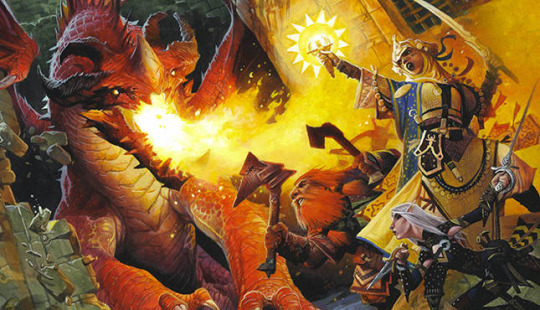
WHAT IS PF2?
Pathfinder is a game that started off as a spin-off of D&D 3rd Edition when 4e was released. It follows the same class-based D20 system with many of the same monsters and creatures as 5e, and for a while, was actually more popular than D&D too!
PF2e is the evolution of that original game; while 1e was notorious for being EXTREMELY rules heavy, PF2 is much smoother and easy to run while somehow also being far more customizable (and still satisfyingly crunchy, too!) I'd best describe it as D&D meets Monster Of The Week!
GAME FEATURES
D&D tends to focus on you being "run of the mill adventurers", but that's not the case in PF2. You're heroes. Even at low levels, you're a cut above the rest! At lvl 1, you're a daring, would-be adventurer; at lvl 20, a living God!
In 5e, you pick your class and race, and other than a choice made at 3rd level or so, you're locked in- no more decisions. In PF, you make choices EVERY. LEVEL. New ways to play your class! New unlocked skill abilities! Grow into your race (now called ancestry) more!
No two characters are the same. I've had a player play a Champion (the Paladin class!) three times, each WILDLY different. Do I want to be a Reinhardt type Shield Tank? A holy Liberator fighting against slavery with a sword? A merciful redeemer giving out second chances?
The game is exceptionally well balanced. Martial characters have incredible athletic abilities casters can only dream of; Fighters jumping 30 feet into the air, Barbarians shapeshifting into dragons, Rogues running across clouds or water... you name it!
Casters are also strong as ever- some even more than before! There are no half-casters. Bards for example are now Level 10 Casters, just like Druids or Wizards, and Sorcerers get to choose the spell list they want depending on their bloodline, making them a totally unique class!
(Level 10 casters?!) That's right. At high levels-- and most parties WILL get to high levels, with Level 20 being the goal for most campaigns!-- casters unlock 10th level spells, stuff on the level of Wish or Time Stop. It really makes playing casters a blast!
The Action Economy is the most widely praised part of the game. On your turn you get three Actions. You can use an Action to do any one thing; run, jump, attack, you name it! You can do these as many times as you want; you can run twice, attack once, attack three times, etc! (Some stuff, like casting spells, take two actions-- this is to stop casters from blasting 3 fireballs in a row on their turn!)
Proficiency is broken down into Untrained, Trained, Master, Expert or Legendary at something. This follows a formula of Ability Score + Your Level + Proficiency Mod. This means every level, your AC will rise, your Attack Mod will rise, etc. Imagine having a +34 to hit at lvl 20!
Crits & Fumbles also work really nicely! When you roll against a DC of some sort (including AC), rolling 10 above the DC gives you the effects of a Critical Success, as if you rolled a Nat 20! Meanwhile, rolling 10 below a DC gives you a Critical Failure, as if you rolled Nat 1.
Initiative? Ha! There's no one Initiative Roll. You roll whatever skill is most applicable for a fight! Facing off against an enemy in front of you? Roll Perception to see who jumps to action first! Swinging off a chandelier? Roll Acrobatics! Sneaking up on someone? STEALTH!
Race (now Ancestry) has dozens of subraces called Heritages. Sure you're an elf- but are you a forest elf? An arctic elf? Hell, maybe you're a Tiefling Elf or a Dhampir Elf! Each has their own benefits and abilities you can choose as you level up!
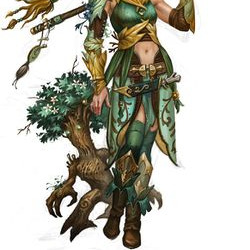
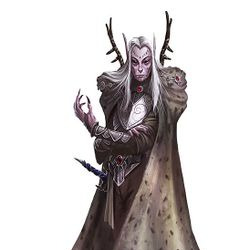
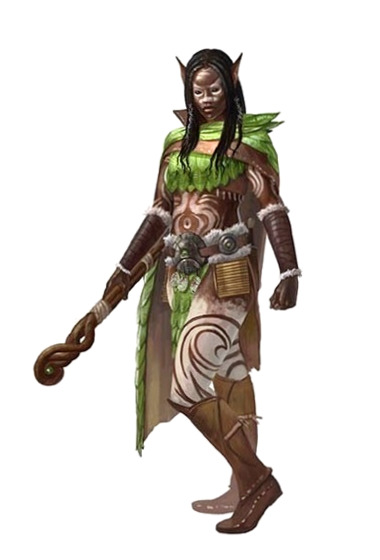
Lastly, the lore of Pathfinder is fantastic. With an expansive setting on the planet Golarion, virtually every culture has an equivalent here- the Philippines has the nation of Minata, Revolutionary France has Galt, Transylvannia has Ustalav... the world's your oyster, literally!

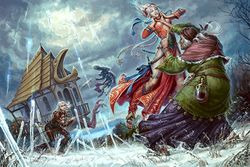
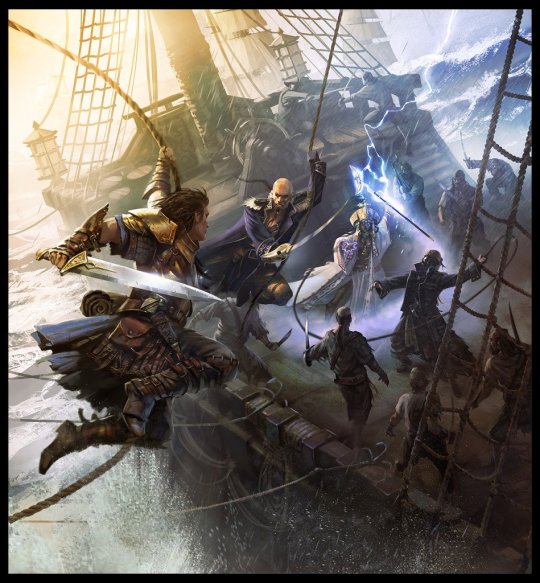
A lot of research goes into exploring these places-- and there's a LOT of canon adventures. The monthly Adventure Path series releases critically acclaimed adventures from Level 1-20 exploring Golarion and tell STUNNING stories. I've been running these for years! They ROCK!
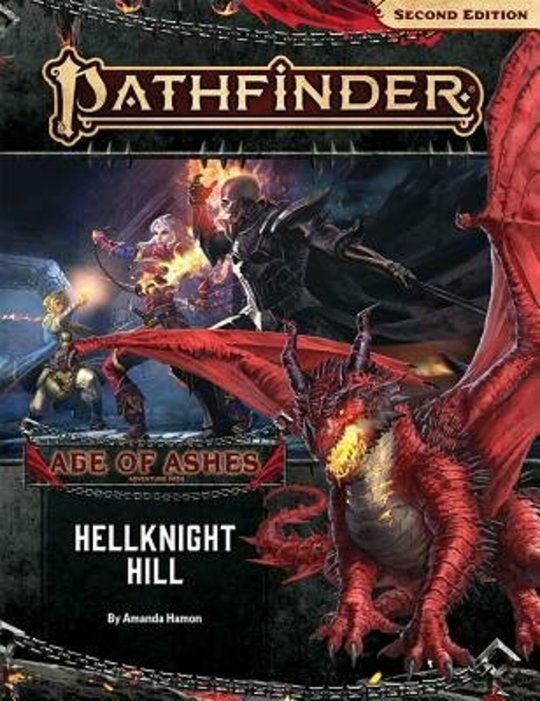
A final note- the deities in Pathfinder are EXTREMELY well fleshed out. Gods have relationships, backstories and can even curse or bless you depending on your actions! The God of Adventure accidentally became a god while drunk, and the Goddesses of the Moon, Art & Sun are poly!

RESOURCES
That's enough explaining the game and what makes it so awesome: here's a few resources you can use to get YOUR adventure in the world of Golarion started!
ARCHIVES OF NETHYS
This has EVERYTHING. I'm talking this is an official repository that has ALL of PF2's rules online. For FREE. Can't afford books? All you're missing is the pretty layout. It's all online for free, word for word as presented in the book.
PF2 EASY LIBRARY
Know the name of a feat, monster or item, and don't want to trawl the archives? Slap it in there for super fast reference! Much quicker and accessible at times. Has filters galore, a spell library, you name it!
PF2 TOOLS
This is your catchall for everything else. I mean EVERYTHING. Homebrew resources? Podcasts? Character sheets? Anything else you might want is stored here. These 3 resources alone are fantastic, and definitely enough to get you started!
ROLL20
Everyone knows Roll20, of course. But Pathfinder's Roll20 Experience is especially great! IMO it, the best character sheet. R20 also has a few free tutorial adventures like The Blooming Catastrophe with premade maps and monsters ready for you! If you haven't ever used Roll20, though, don't look to me- look to the master, and a friend of mine, Ediwir, with his tutorial on how to dress Roll20 up like a real pro!
This really is only the start for Pathfinder 2nd Edition. Make sure to support this game if you want to see a change in the mainstream TTRPG world, have fun telling new heights of adventures, and above all else... go save the world, everyone!

135 notes
·
View notes
Text
I've really been enjoying @videogamehell 's actual play podcast series Tabletop Hell. God it's good to listen to trans women playing rpgs together. It's not as carefully edited and paced as an incredibly polished operation like TAZ, but like there's something very good about genuinely unpredictable "play to find out what happens" in practice, seeing a story unfold as it is made.
Anyway they had a guest from another actual play podcast @wheelandway recently so that will be next on the list. I bounced off Dungeons and Lesbians because they were doing a lot of things I don't like about DnD.
I've also finally been having a chance to RP myself again through the GaLS RPG server which has been really good, I've missed it a lot. I've been running a game of Legacy: Life Among the Ruins and I've just started running Night Witches, both of which are really good systems; I'm also going to end up playing DnD 5e albeit cleaned up a lot because wow, DnD as printed is kinda a racist mess isn't it.
Any group that is defined by nothing more than "trans women who do a very common activity" is going to have friction between people and that has been difficult to navigate when it's come up in my group, but I've had some very good games and interesting discussions on there.
It's still no real substitute for socialisation in person. I really really need to move.
17 notes
·
View notes